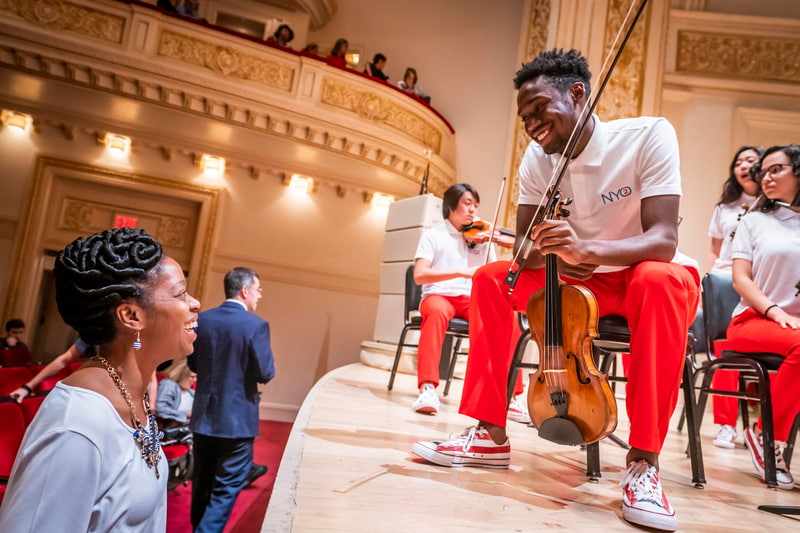Could the arts led the way in amplifying creative opportunities? Could youth orchestras teach symphonies how to become more inclusive organizations? Read this piece to see what it takes to go from exclusive to inclusive and what those changes can mean for young people who have historically been excluded from the world of orchestral music.
By Abigale Franco and Dr. Dennie Palmer Wolf
What would it look like if the arts led the way in amplifying creative opportunities and creating opportunity structures for youth? With funding from the National Endowment for the Arts, WolfBrown, Carnegie Hall, and the musicians in its youth orchestra program NYO2, collaborated for six years to address exactly this question. And while that study focuses on a single program, the findings show what it takes to go from exclusive to inclusive and what those changes can mean for young people who have historically been excluded from the world of orchestral music.
While the report focuses on the opportunity structures that welcome and support young musicians, it has far-reaching messages about the fact that no detail is too small to contribute to equity.
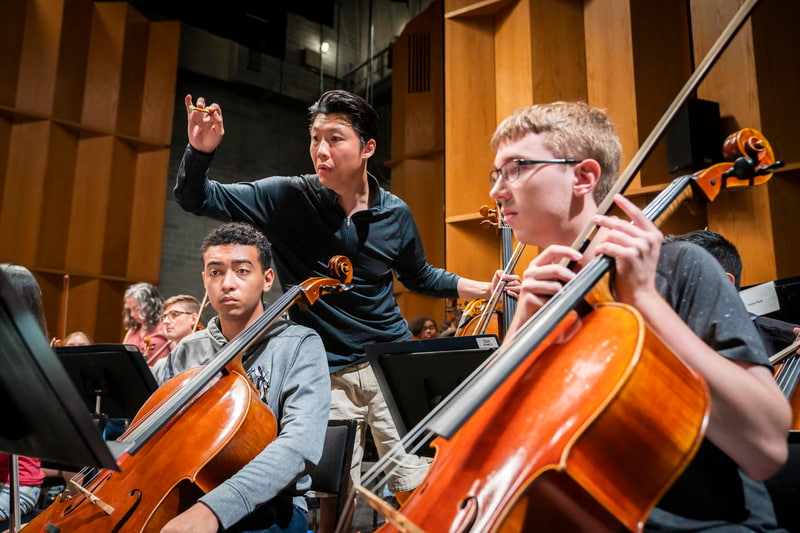
“With Freedom of Soul to Do and Be: A Longitudinal Study of Young Musicians in Carnegie Hall’s NYO2 Orchestra” follows hundreds of young people as they applied, were accepted or rejected, and played in Carnegie’s youth orchestras.
The report tells the story of young musicians between the ages 14 and 17 from communities across the country, countering young people’s shrinking access to arts education and pathways to participation.
How does NYO2 recruit and sustain a diverse ensemble? Every aspect of the program has been re-designed to feature a network of opportunity structures that remove barriers, encourage belonging, and promote participation. For example, NYO2’s nomination and application processes begin with recommendations from teachers, directors, and even local community leaders–adults that most children should have access to. Additionally, the online application encourages applicants to re-record their audition as many times as needed, drawing on help from teachers, family, and peers. Alumni of the program even created an online archive of supportive videos to help level the playing field between self-taught musicians and those who have had the advantages of private lessons or pre-conservatory ensembles, for example.
Reviewers share quality written feedback to each applicant, regardless of acceptance into the program. Providing meaningful feedback to everyone, including rejected applicants, encourages growth and continued engagement for players from all backgrounds. The incidence of re-applications in the following year suggests that young people incorporate this feedback into their musical practice and step up again in subsequent years. More than 200 musicians in the study were accepted after submitting multiple applications.
Other opportunity structures promote a sense of belonging for everyone who interacts with the program. This sense of belonging is also essential for continued engagement in music beyond adolescence, when access to musical opportunities, such as those provided through school, disappear. The findings suggest that young people who participated in NYO2 were more likely than their peers to exhibit continued musical engagement throughout their transitions into adulthood–such as a higher number of hours spent practicing instruments. Interviews with the inaugural 2016 cohort of participants reveal the high percentage of them (89%) who continue to play for audiences and their strong desire to “give back” to their communities (almost half of them mentor or volunteer).
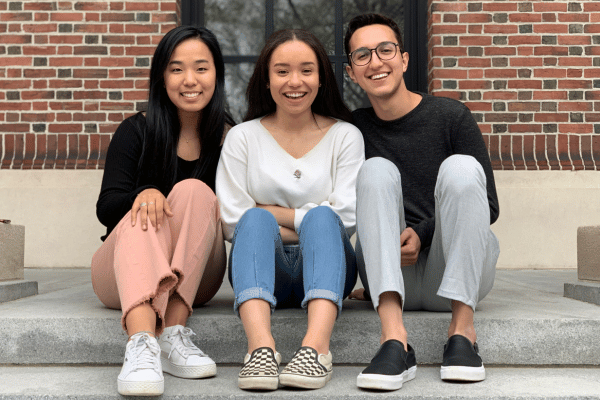
What’s the Impact?
Researchers used a wide range of data including applications, alumni surveys, interviews, and observation data to investigate the consequences of these opportunity structures on NYO2’s participants, particularly those coming from historically underrepresented communities.
Several overarching themes emerged throughout data collection and analysis with implications not only for youth orchestras and creative youth development, but for the future of programming and opportunities more broadly.
- Diversity and Quality: Young musicians identifying as Black, Hispanic, and Latino make up a greater proportion of accepted participants than they do applicants, reflecting commitments by the staff and reviewers to pursue excellence of the ensemble as a whole, rather than excellence of the individual. The pursuit of excellence requires asking, “Is this a young person who brings something vital to the orchestra? Is this a young person whose musical life could be changed by this experience?” This approach is an important alternative to simply choosing the top audition-scorers. A critically important fact about this approach: There is no conflict between increased diversity and musical excellence. Since the program launched in 2017, over 90% of orchestra members have come from the top two scoring quartiles.
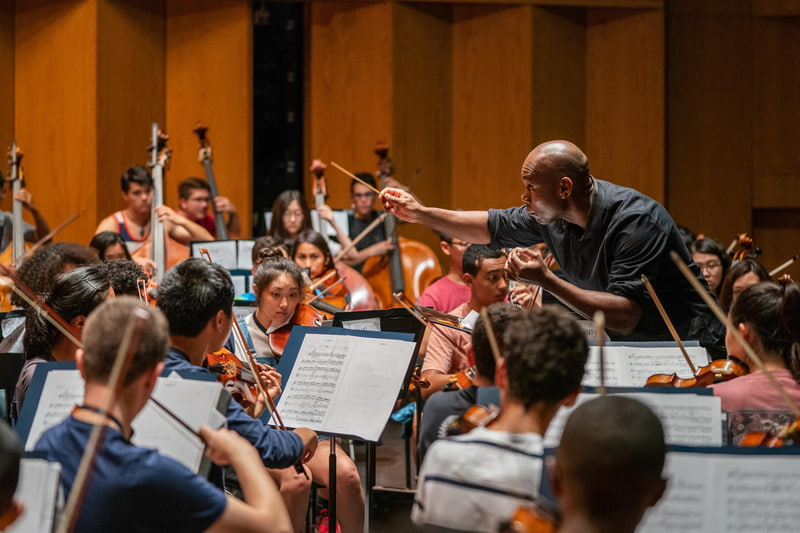
- Persistence and Engagement: Young musicians who attended NYO2 reported a range of short- and long-term benefits of participating, when compared to peers who applied to the program but followed other paths. These effects were especially marked for NYO2 musicians from historically underrepresented communities, who, for example, reported playing an average of 9 hours more/week than their non-NYO2 peers. This signals their commitment to practicing and playing at a level that will make them contenders, along with the belief that they have a future in music.
- An Enriched Definition of Musicianship: Researchers also found evidence that NYO2 players from historically underrepresented communities, as compared to their NYO2 peers, reported a greater desire to “give back” after having gone through the program. This suggests that the program also cultivates an expanding sense of community building and engagement for participants.
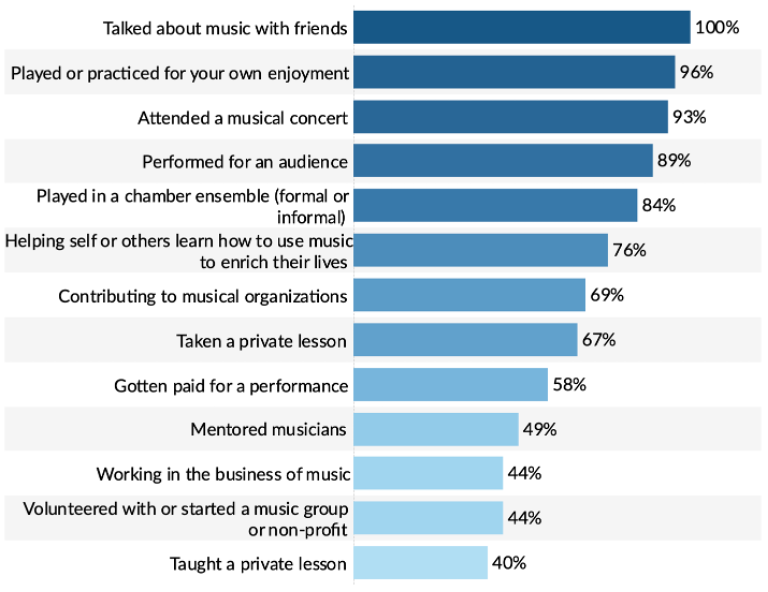
Leading A Broader Conversation About Youth Orchestras Opportunity Structures
These findings have implications beyond NYO2. Here are four ways in which NYO2 and other equity-informed youth orchestras are thinking about, practicing, and promoting equitable opportunities.
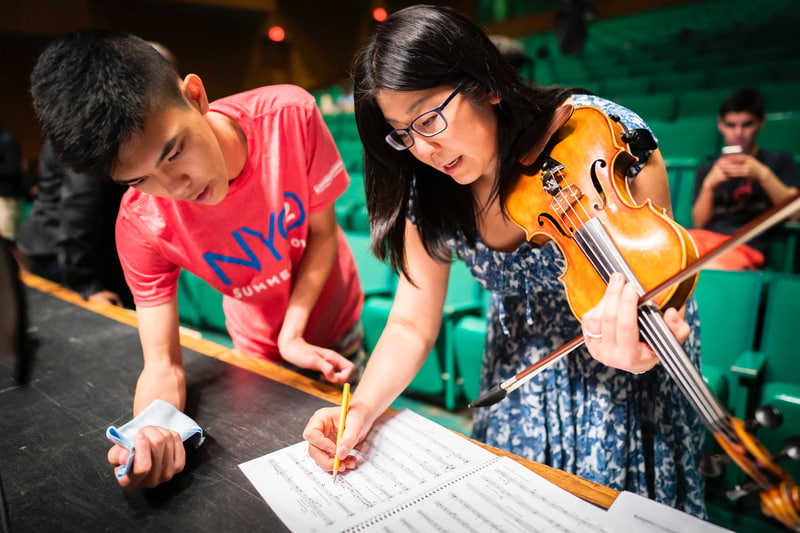
- Create, rather than collect, interest: Underrepresentation of Black, Hispanic, and Latino players in classical music spaces is not symptomatic of a lack of interest within underrepresented communities, but rather a direct outcome of exclusionary practices (e.g., downtown locations, auditions without feedback and support, high fees and hidden costs, and closed, largely Western European repertoire). It is time to re-think traditional applications, auditions, and enrollment in favor of strategies that are more inclusive, inviting, and supportive.
- Re-think selection: Admission to NYO2 requires meeting a high level of performance, in which many young people qualify. But beyond performance, additional questions include: “Who brings something unique? Who would not otherwise have this opportunity? Whose musical trajectory could be changed by this experience?”
- Examine every choice: Received habits aren’t set in stone. It’s also possible to deliberately infuse–or replace–existing systems with opportunity structures that, when thoughtfully and intentionally executed, increase belonging. No choice is hard-wired. Every choice is worth examining.
- Build pathways: NYO2 students can enter at 14 and re-apply until they are 17. After aging out of the NYO2 program, musicians are then eligible to apply to the older NYO orchestra, where they can participate until age 19. Many stay involved: alumni helped with the research, and others built NYO-U, a library of videos and podcasts designed to share strategies, tips, and “insider musical knowledge.” Other players have gone on to found non-profits that provide online lessons to students who otherwise would not have access to private instruction. Having experienced a pathway, they are invested in creating these opportunity structures for others.
To read the full report and learn more about NYO2, opportunity structures, and how they might be applied to other industries and fields, visit the full report.

This post is a part of the Breaking Barriers focus of our Amplifying Creative Opportunities newsletter.
Read more of the second issue of our Amplifying Creative Opportunities newsletter.


